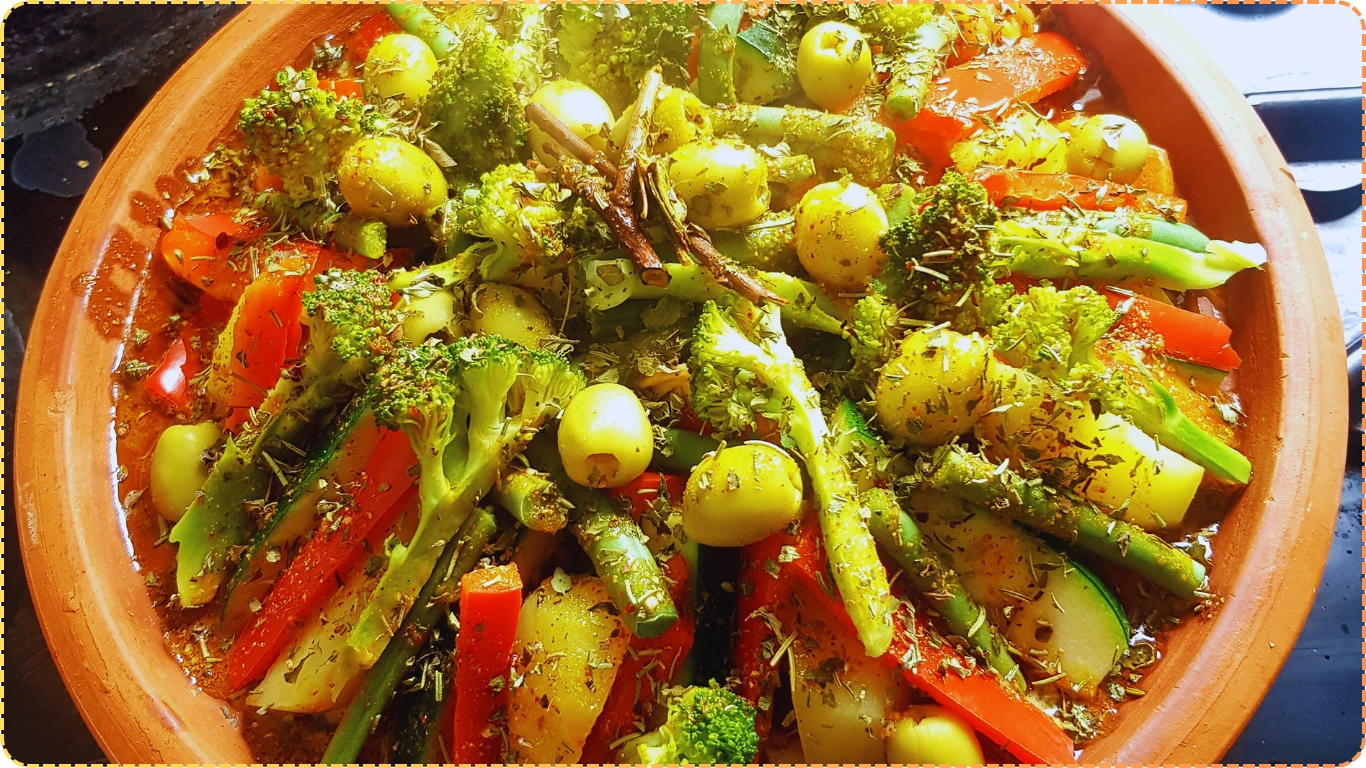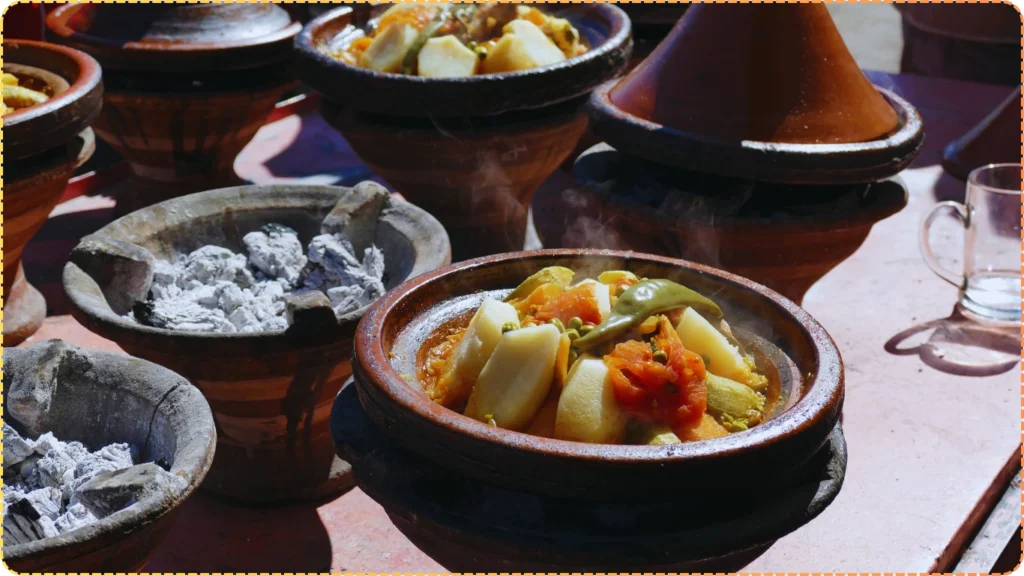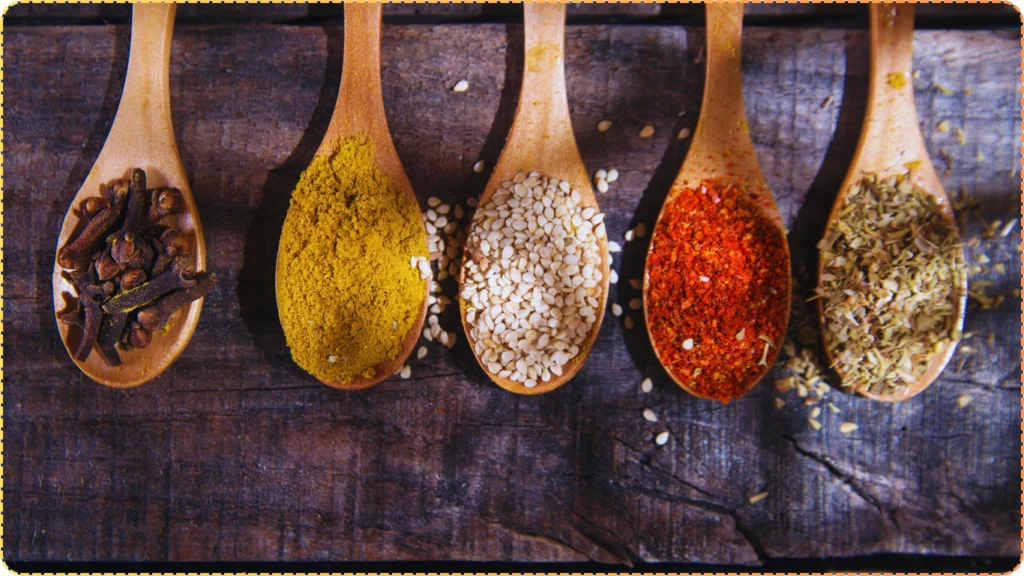Beef Tagine with Green Beans

Table of Content
Get ready to explore the authentic Moroccan tagine with Green Beans & Olives recipe. This traditional North African dish combines slow-cooked beef with green beans and olives. You’ll discover the rich flavors of this classic Moroccan dish.
This slow-cooked beef with vegetables is a staple in Moroccan cuisine. You’ll learn how to prepare it using traditional methods.
As you dive into Moroccan cooking, you’ll learn about its history and cultural significance. You’ll also learn how to make a delicious beef tagine with green beans and olives. This recipe will help you slow-cook beef with vegetables to perfection, creating a savory and flavorful meal.
Key Takeaways
- You will learn about the authentic Moroccan tagine recipe and its cultural significance.
- Discover the essential ingredients and equipment needed for slow-cooked beef with vegetables.
- Understand the step-by-step process of preparing beef tagine with green beans and olives.
- Explore the traditional Moroccan spice combinations used in tagine cooking.
- Learn how to avoid common mistakes and achieve perfect results with your beef tagine with green beans and olives.
- Get inspired by serving suggestions and accompaniments for your authentic Moroccan tagine recipe.
Introduction to Moroccan Tagine Cooking

Exploring traditional North African cuisine, you’ll find the rich flavors of Moroccan tagine cooking. This slow-cooked stew combines meat, vegetables, and dried fruits. To start, it’s key to know the basics of tagine cooking and its cultural importance.
Tagine cooking’s history goes back to the 9th century. The earthenware pot with a conical lid cooks food slowly and evenly. This method enhances the flavors, making the stew delicious and aromatic.
What is a Tagine?
A tagine is a slow-cooked stew with meat, vegetables, and dried fruits. It’s cooked in an earthenware pot with a conical lid. This cooking method is a big part of North African cuisine, enjoyed at special events.
History of Tagine Cooking
The history of tagine cooking starts in the 9th century with the Berbers in Morocco. Over time, it was shaped by Arab, Mediterranean, and Middle Eastern flavors. Today, it’s a cherished tradition in North Africa, with many recipes to try.
Cultural Significance in North African Cuisine
Tagine cooking is deeply rooted in North African culture, bringing people together. It’s a staple at weddings and holidays, showcasing the region’s warm hospitality and rich heritage.
Essential Equipment for Making Beef Tagine
To make a tasty beef tagine, you’ll need some key tools. A traditional earthenware tagine pot or a clay cooker is a must. You’ll also need a large bowl, a cutting board, and utensils to chop the ingredients.
Here’s a list of the equipment you’ll need:
- Tagine pot or clay cooker
- Large bowl
- Cutting board
- Utensils (e.g., knife, spoon, spatula)
When picking your equipment, think about the size of your pot. A bigger pot lets you cook more, perfect for a large beef tagine. Also, choose pots made from quality materials for even heat and durability.
With the right tools, you’re set to make a delicious beef tagine. Don’t forget to have a hearty stew recipe ready to go with it.
view: chicken-tagine
Slow-Cooked Beef Tagine with Green Beans and Olives
To make a tasty beef tagine with green beans and olives, you need the right ingredients. This Moroccan dish, also known as green bean tagine, includes tender beef, fresh green beans, and various olives. Adding potatoes to the moroccan beef tagine with potatoes gives it more flavor and texture.
For a beef stew with green olives, pick a tender beef cut. Look for one with a good mix of fat and lean meat. You can also mix beef and lamb for extra flavor.
Meat Selection Tips
When picking the meat for your beef tagine, keep these tips in mind:
- Choose a cut of beef that’s great for slow cooking, like chuck or brisket.
- Go for a cut with a mix of fat and lean meat for better flavor and tenderness.
- Think about using a mix of beef and lamb for a true Moroccan taste.
Fresh Produce Requirements
Fresh produce is key to your beef tagine’s taste and texture. Make sure to pick fresh green beans and different olives, like green olives or Kalamata olives. They enhance the dish by introducing rich layers of flavor and complexity.
Preparation Methods and Techniques
To make a real Moroccan beef tagine with preserved lemons, marinating the beef is key. This process ensures the meat becomes juicy, tender, and rich in flavor. Mix olive oil, garlic, and spices with the beef for at least 30 minutes.
For Arabic green beans with beef, keeping the beans crunchy is important. Briefly boil them in water for 3-5 minutes to soften and preserve their color.. Then, quickly cool them in an ice bath to stop cooking.
Here are some important techniques for your Moroccan beef tagine and green beans:
- Choose the best ingredients, like fresh green beans and preserved lemons, for great taste.
- Don’t overcook the green beans to keep their crunchiness.
- Adjust the spices to your liking and add onions and ginger for extra flavor.
By using these preparation methods and techniques, you’ll make a tasty Moroccan beef tagine and green beans. Your family and friends will love it.
| Ingredient | Quantity |
|---|---|
| Beef | 1 pound |
| Green beans | 1 pound |
| Preserved lemons | 2 tablespoons |
Step-by-Step Cooking Process
To make a tasty slow-cooked beef with vegetables, follow a few steps. This dish is famous for its rich flavors and tender meat. First, prepare your ingredients, like the beef, veggies, and spices.
With everything ready, start cooking. Brown the meat, sauté the veggies, and layer them in the tagine pot. Cooking it low and slow is key to blending all the flavors.
Meat Preparation
Season the beef with spices like cumin, coriander, and cinnamon. These spices are common in North African cooking and make the dish warm and flavorful.
Vegetable Preparation
Then, get your veggies ready, including onions, garlic, and bell peppers. These add sweetness and crunch to the dish.
Layering Ingredients
Layer the ingredients in the tagine pot. Start with meat, then veggies, and spices. Keep repeating until you’ve used everything, ending with veggies on top.
Cooking Times and Temperatures
Cook the tagine over low heat for hours. The meat should be tender, and the veggies cooked. Cooking time varies based on pot size and stove heat. Aim for at least 2 hours.
Traditional Moroccan Spice Combinations
To make a real Moroccan tagine, you must know the traditional spice mixes. A good tagine recipe depends on the right spice balance. Moroccan dishes are famous for their deep, complex tastes, thanks to a mix of spices.

For an authentic Moroccan tagine, use top-quality spices and mix them well. Start with an easy tagine recipe and tweak the spice mix to your liking. Important spices include cumin, coriander, and cinnamon.
Essential Spices
- Cumin: adds a warm, earthy flavor
- Coriander: provides a slightly sweet and citrusy flavor
- Cinnamon: adds a warm, sweet flavor
Creating Your Spice Blend
To make your own spice mix for a Moroccan tagine, start with equal parts of cumin, coriander, and cinnamon. Adjust the amounts to your taste, adding more or less of each spice. The goal is to find a flavor balance that goes well with the dish’s other ingredients. With practice, you can make a delicious, authentic tagine.
| Spice | Quantity |
|---|---|
| Cumin | 2 tablespoons |
| Coriander | 2 tablespoons |
| Cinnamon | 1 tablespoon |
Tips for Perfect Green Beans and Olives Integration
To make a tasty beef tagine with green beans and olives, balance the flavors and textures. Choose the right green beans, like French or snap beans, and cook them just right. Add the green beans towards the end to keep them crunchy and flavorful.
For olives, pick green or black, based on what you like. Balance their salty taste with the green beans’ sweetness. A squeeze of fresh lemon juice or some chopped parsley can do the trick. This makes the dish savory and refreshing.
Here are some tips for a great green bean tagine:
- Use top-notch ingredients, like fresh green beans and olives.
- Cook the green beans until they’re tender but still crisp.
- Balance flavors with spices, herbs, and lemon juice.
Follow these tips to make a delicious beef tagine with green beans and olives. It’s sure to wow your family and friends.
Common Mistakes to Avoid
When making a hearty stew like beef tagine, watch out for common mistakes. You’ve put in time and effort to pick the right ingredients. It’s key to avoid errors that can ruin the dish’s taste and texture.
To make sure your beef tagine is delicious, keep these pitfalls in mind. Temperature control is crucial. The right balance of ingredients is also important for flavor. And, timing is everything to avoid overcooking or undercooking.
Temperature Control Issues
Temperature control is key when cooking beef tagine. Too high heat can burn or overcook the ingredients. Too low heat can lead to uneven cooking. Always keep an eye on the heat and adjust it when needed.
Ingredient Balance Problems
Getting the right balance of ingredients is vital in a hearty stew like beef tagine. If one ingredient dominates, the dish can be off-balance. Taste and adjust the seasoning as you go to avoid this.
Timing Mistakes
Timing is everything when cooking beef tagine. Adding ingredients too early or too late can mess up the cooking. Stick to a recipe and plan your cooking time well to avoid mistakes.
Knowing these common mistakes helps you avoid them. With practice and patience, you’ll master the art of making beef tagine. You’ll enjoy the rich flavors of Morocco in no time.
| Mistake | Effect | Solution |
|---|---|---|
| Temperature control issues | Overcooked or undercooked ingredients | Monitor heat and adjust as needed |
| Ingredient balance problems | Unbalanced flavor | Taste and adjust seasoning |
| Timing mistakes | Overcooked or undercooked ingredients | Follow recipe and plan cooking time carefully |
Serving Suggestions and Accompaniments
When serving your Moroccan beef tagine with potatoes, think about adding traditional sides. Serving it over fluffy couscous is a great idea. It soaks up the sauce nicely. You can also offer warm bread, like crusty baguette or pita, for dipping.
Consider pairing the tagine with green olives and veggies like roasted carrots or steamed green beans. A simple salad of mixed greens, cherry tomatoes, and cucumber can add a refreshing touch. For a bigger side, try roasted potatoes like Yukon gold or sweet potatoes. Toss them with olive oil, salt, and pepper for extra flavor.
Here are some more ideas for sides:
- Grilled or roasted veggies like zucchini, bell peppers, or eggplant
- Steamed or sautéed spinach, kale, or other leafy greens
- Warm pita bread or crusty baguette for dipping into the sauce
- A side of quinoa, brown rice, or other whole grains for added nutrition
By offering a variety of sides, you can make a complete and satisfying meal. It will highlight the rich flavors and aromas of your Moroccan beef tagine with potatoes and beef stew with green olives.
Conclusion
Making the perfect authentic Moroccan tagine recipe is a mix of rich flavors, slow cooking, and cultural traditions. With the right equipment, ingredients, and methods, you can bring North Africa’s markets to your kitchen.
Tagine cooking is all about trying new slow-cooked beef with vegetables and spice mixes. Don’t be afraid to mix and match ingredients and spices to make your own special dish. This traditional Moroccan meal is all about expressing yourself through food.
Whether it’s for a big event or a cozy night in, the most important thing is to enjoy making your tagine. Take your time, let the flavors blend, and enjoy the rich, aromatic taste of a well-made Moroccan tagine.
FAQ
What is a tagine?
A tagine is a slow-cooked stew. It’s made with meat, vegetables, and dried fruits. It’s cooked in an earthenware pot with a conical lid. This dish comes from North Africa and dates back to the 9th century.
What equipment do I need to make an authentic Beef Tagine?
You’ll need a traditional earthenware tagine pot or a clay cooker. Also, a large bowl, a cutting board, and a set of utensils are necessary.
What are the essential ingredients for Beef Tagine with Green Beans and Olives?
You’ll need a lean cut of beef, fresh green beans, and olives. Moroccan spices, preserved lemons, and onions and garlic are also key.
How do I prepare the meat and vegetables for the Beef Tagine?
Marinate the beef in spices and aromatics first. Then, trim and prepare the green beans. Slice the onions and garlic. Proper preparation is crucial for flavor and balance.
What are the key steps in the cooking process for Beef Tagine?
Layer the ingredients in the tagine pot. Simmer the stew at a low temperature for hours. Adjust the seasoning as needed. Timing and temperature control are key for the perfect dish.
What are some common mistakes to avoid when making Beef Tagine?
Avoid temperature control issues, imbalanced ingredients, and timing mistakes. Keep the temperature low, balance spices and vegetables, and monitor cooking time.
What are some traditional Moroccan spice combinations used in tagine cooking?
Moroccan spice blends often include cumin, coriander, cinnamon, ginger, turmeric, and paprika. The right mix of these spices is essential for authentic flavor.
How can I incorporate green beans and olives into the Beef Tagine?
Add green beans towards the end of cooking to keep them tender. Olives can be added earlier to infuse flavor throughout the dish.
What are some serving suggestions and accompaniments for Beef Tagine?
Serve Beef Tagine with couscous or Moroccan bread. It pairs well with vegetables, salads, and traditional Moroccan side dishes. Potatoes and olives are also great accompaniments.
